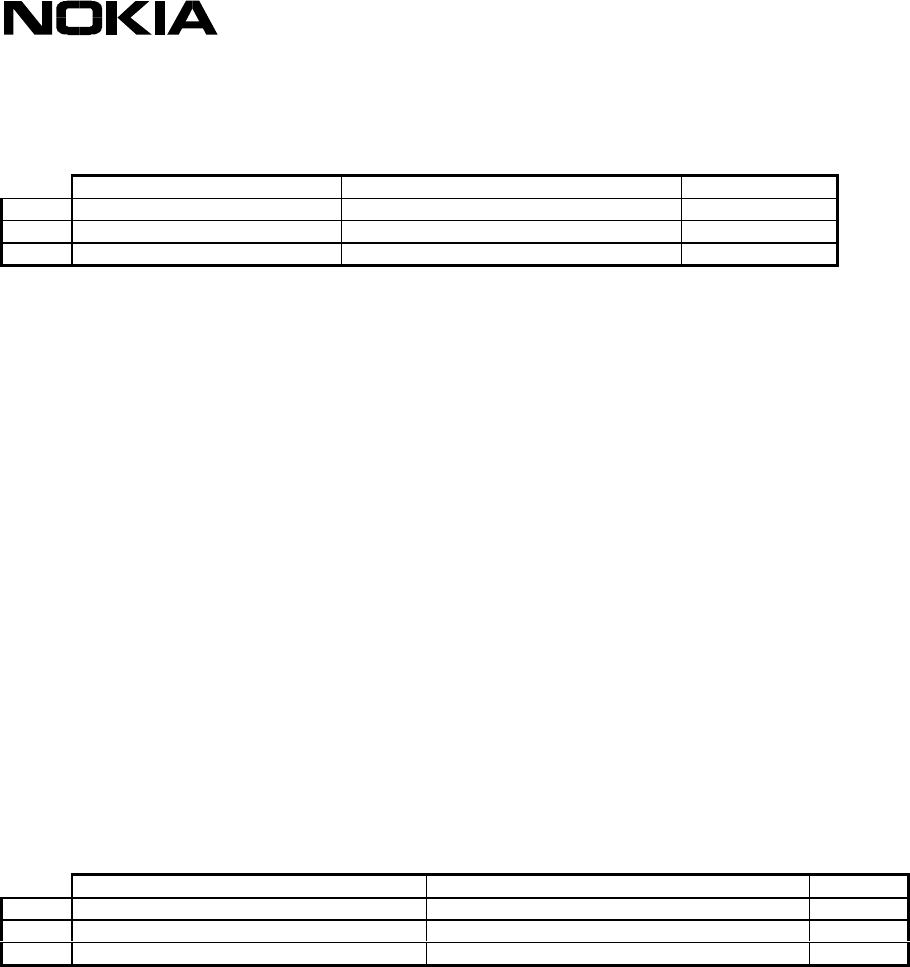
15
List of AT Commands for Nokia 22
Copyright © Nokia Mobile Phones 2001. All rights reserved.
4.1.11 +ICF DTE-DCE character framing
Command Response Default
Set
+ICF=<format>,<parity> [3,3]
Read
+ICF? +ICF: <format>,<parity>
Test
+ICF=? +ICF: (3,5),(0-3)
The +ICF command is used to determine the local serial port start-stop character framing that the
Nokia 22 uses when accepting DTE commands and when transmitting information text and a
result.
NOTE: The reset commands Z and &F do not change this setting.
Defined values
<format> determines the number of bits in the data bits, the presence of a parity bit,
and the number of stop bits in the start-stop frame.
3 8 data, 1 stop
5 7 data, 1 parity, 1 stop
<parity> determines how the parity bit is generated and checked, if present.
0 odd
1even
2mark
3 space
4.1.12 +IFC DTE-DCE local flow control
Command Response Default
Set
+IFC=<dce-by-dte>,<dte-by-dce> 2,2
Read
+IFC? +IFC: <dce-by-dte>,<dte-by-dce>
Test
+IFC=? +IFC: (0-3),(0-2)
The +IFC controls the operation of a local flow control between the DTE and the Nokia 22.
Defined values
<dce-by-dte> specifies the method to be used by the DTE to control the flow of the
received data from the Nokia 22
<dte-by-dce> specifies the method to be used by the Nokia 22 to control the flow of
the transmitted data from the DTE
0 no flow control
1 software flow control (XON/XOFF)
2 hardware flow control (RTS/CTS)
3 software flow control (XON/XOFF), with flow control characters passed also to the
remote DCE


















